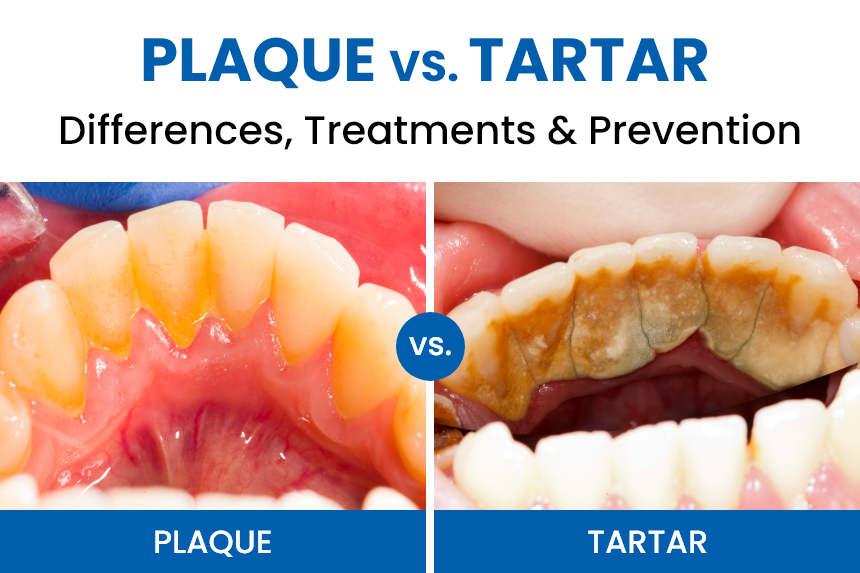Your teeth are durable and capable of withstanding wear and tear because of the enamel. But poor oral hygiene and eating habits can destroy that enamel. Plaque buildup may harden on the surface of your teeth and put you at risk of developing tartar and other oral health issues. When plaque hardens, it turns into tartar, which can lead to gum disease and tooth loss. Only professional teeth cleaning in Montreal can help remove tartar, so it’s advisable to see your dentist at least twice a year.
But are plaque and tartar the same? Knowing and understanding the differences between them along with their signs and symptoms can help you identify their presence and ensure you can protect yourself.
What is plaque?
Plaque is that sticky and tender film that accumulates on the teeth because of a mixture of saliva, food, and bacteria. Although your mouth naturally has bacteria, some are not good for your teeth and oral health.
Harmful bacteria create acids after you eat or drink, and they thrive when you consume sugary beverages and food. These acids can destroy the enamel of your teeth, leaving them vulnerable to bacteria. If left unaddressed, the plaque can harden and become tartar, which can cause tender and swollen gums and lead to early onset gum or periodontal disease.
What is tartar?
When plaque remains longer on your teeth, minerals from your saliva combine with it and result in tartar. Also known as calculus, tartar creates a hard coating on the exterior of the teeth—usually below the gum line. This makes it difficult to clean the teeth.
If tartar spreads beneath the gum line, only a dentist can remove it with professional teeth cleaning in Montreal to prevent periodontal disease.
Symptoms of plaque and tartar
You can tell that you have plaque when you constantly have bad breath and a fuzzy feeling on your teeth. You might also notice red, tender, and swollen gums, which may be prone to bleeding every time you brush.
As for tartar, it’s usually detected by a rough feeling on the teeth and swollen gum tissue. It may cause your gums to bleed easily, too. If you check in the mirror, you’ll notice brownish or yellow discoloration at the gum line or between the lower front teeth. You should consider booking an appointment with a dental or orthodontic clinic to get tartar removed.
Causes
Too much plaque and tartar buildup typically occur when you fail to properly care for your teeth. After eating, bacteria from your food create acids that eat the enamel on the teeth. When tartar forms, it allows plaque to develop and spread until it causes worsening oral health conditions. It’s a vicious cycle that can increase your risk of tooth decay and other dental problems.
Prevention
Brush thoroughly at least twice a day to prevent plaque and tartar buildup. Aim to brush for at least two minutes to clean your mouth effectively. You should also consider flossing at least once a day.
Of course, you shouldn’t skip visits to a dental and orthodontic clinic, too. Visit at least twice a year for teeth cleaning in Montreal. If it’s been a while since your last professional cleaning, book an appointment with Alpha Dental Clinic. We offer almost all dentistry services to ensure you’re getting the best possible customer care and treatment you deserve.


